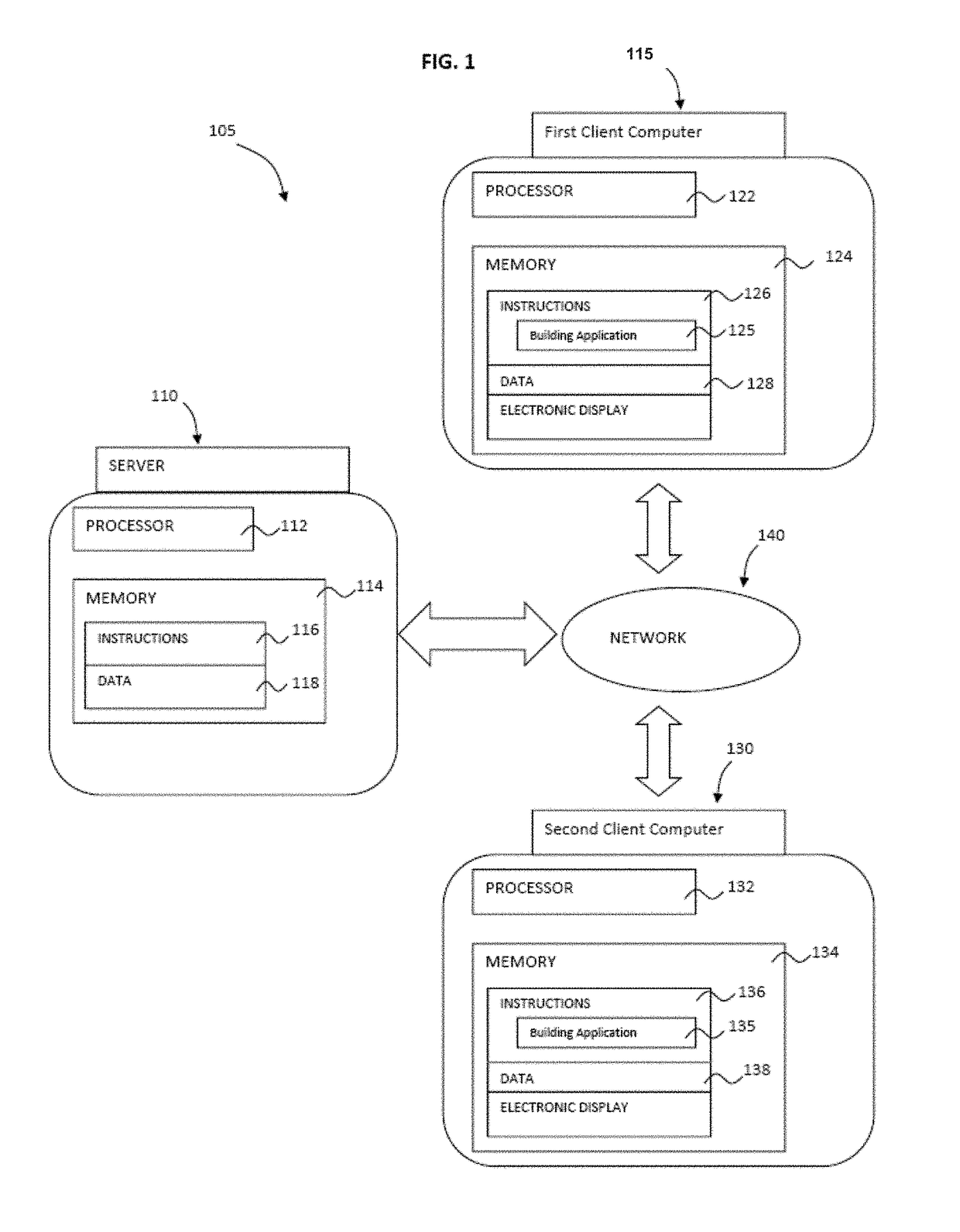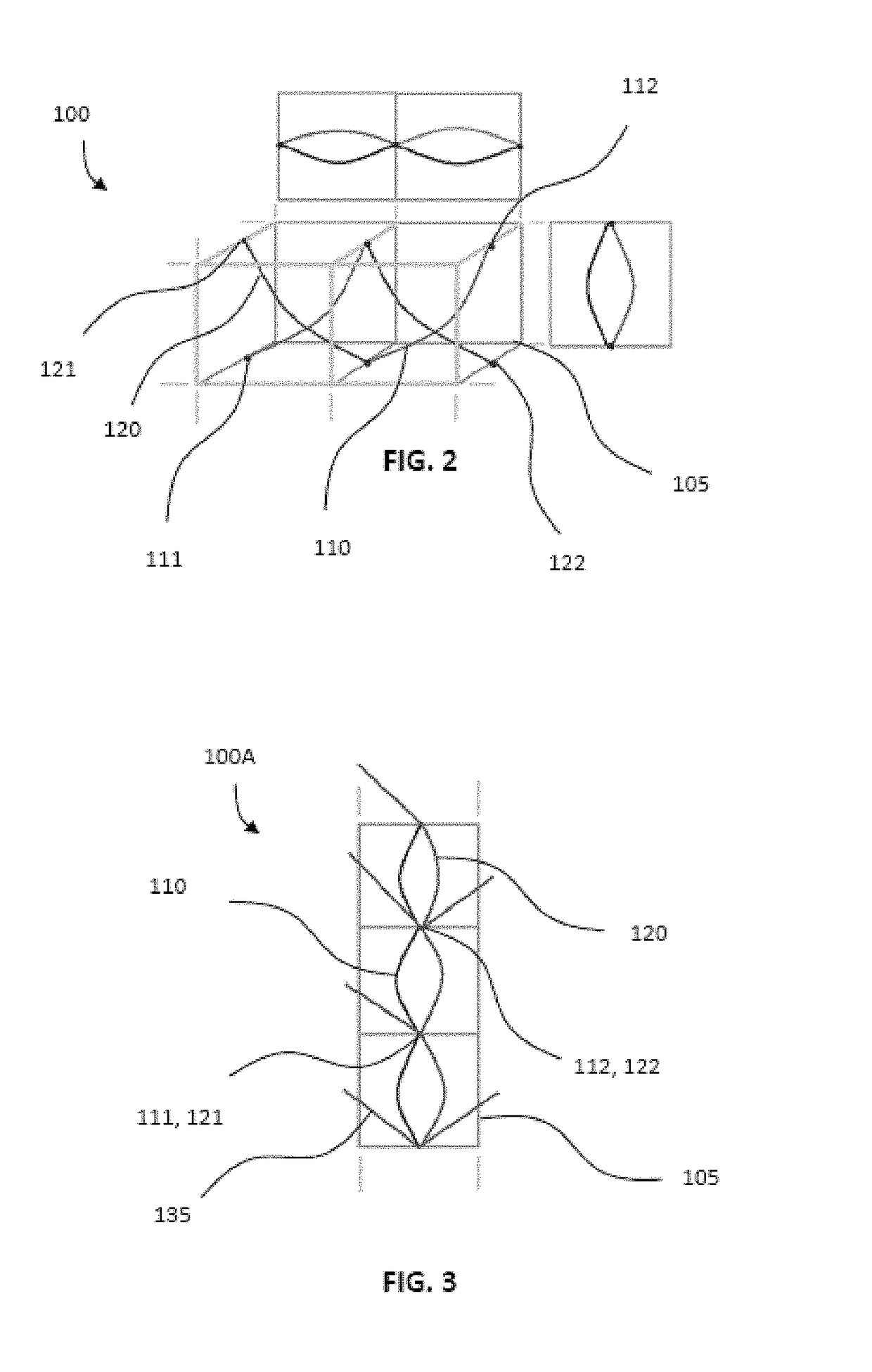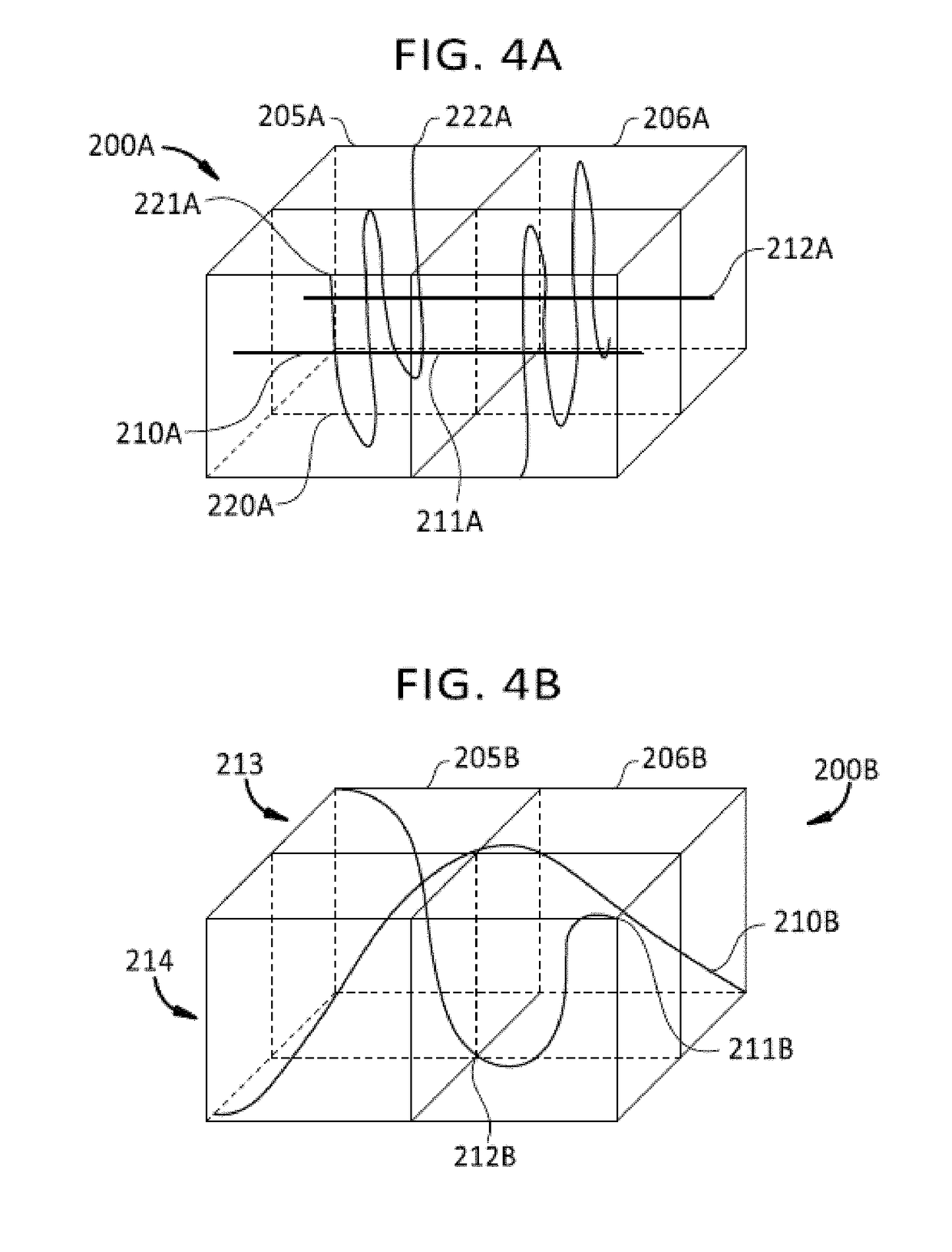Porous structures produced by additive layer manufacturing
a technology of additive manufacturing and porous structures, which is applied in the direction of additive manufacturing processes, prostheses, manufacturing tools, etc., can solve the problems of inability to shape for a proper fit in a non-uniform space, loosening of the aseptic implant and cement, and lack of flexibility of the cement used to retain bone, so as to facilitate bone ingrowth and promote bone ingrowth
- Summary
- Abstract
- Description
- Claims
- Application Information
AI Technical Summary
Benefits of technology
Problems solved by technology
Method used
Image
Examples
Embodiment Construction
[0097]This invention relates generally to generating computer models of three-dimensional structures. These models may be used to prepare porous tissue in-growth structures in medical implants and prostheses. The models may include features corresponding to tangible structures.
[0098]FIG. 1 depicts system 105 that may be used, among other functions, to generate, store and share three-dimensional models of structures. System 105 may include at least one server computer 110, first client computer 115, and in some instances, at least second client computer 130. These computers may send and receive information via network 140. For example, a first user may generate a model at first client device 115. The model may then be uploaded to server 110 and distributed via network 140 to second client computer 130 for viewing and modification by a second user, who or which may be the first user.
[0099]Network 140, and intervening communication points, may comprise various configurations and protoc...
PUM
| Property | Measurement | Unit |
|---|---|---|
| angle | aaaaa | aaaaa |
| diameter | aaaaa | aaaaa |
| diameter | aaaaa | aaaaa |
Abstract
Description
Claims
Application Information
 Login to View More
Login to View More - R&D
- Intellectual Property
- Life Sciences
- Materials
- Tech Scout
- Unparalleled Data Quality
- Higher Quality Content
- 60% Fewer Hallucinations
Browse by: Latest US Patents, China's latest patents, Technical Efficacy Thesaurus, Application Domain, Technology Topic, Popular Technical Reports.
© 2025 PatSnap. All rights reserved.Legal|Privacy policy|Modern Slavery Act Transparency Statement|Sitemap|About US| Contact US: help@patsnap.com



